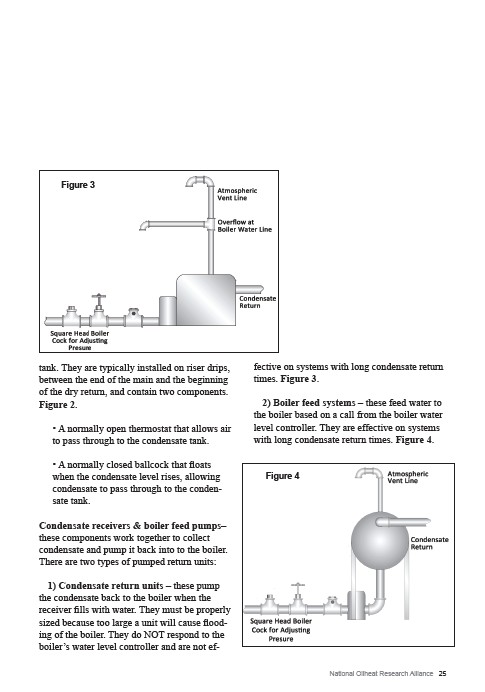
fective on systems with long condensate return
times. Figure 3.
2) Boiler feed systems – these feed water to
the boiler based on a call from the boiler water
level controller. They are effective on systems
with long condensate return times. Figure 4.
National Oilheat Research Alliance 25
Figure 3
tank. They are typically installed on riser drips,
between the end of the main and the beginning
of the dry return, and contain two components.
Figure 2.
• A normally open thermostat that allows air
to pass through to the condensate tank.
• A normally closed ballcock that floats
when the condensate level rises, allowing
condensate to pass through to the condensate
tank.
Condensate receivers & boiler feed pumps–
these components work together to collect
condensate and pump it back into to the boiler.
There are two types of pumped return units:
1) Condensate return units – these pump
the condensate back to the boiler when the
receiver fills with water. They must be properly
sized because too large a unit will cause flooding
of the boiler. They do NOT respond to the
boiler’s water level controller and are not ef-
Figure 4